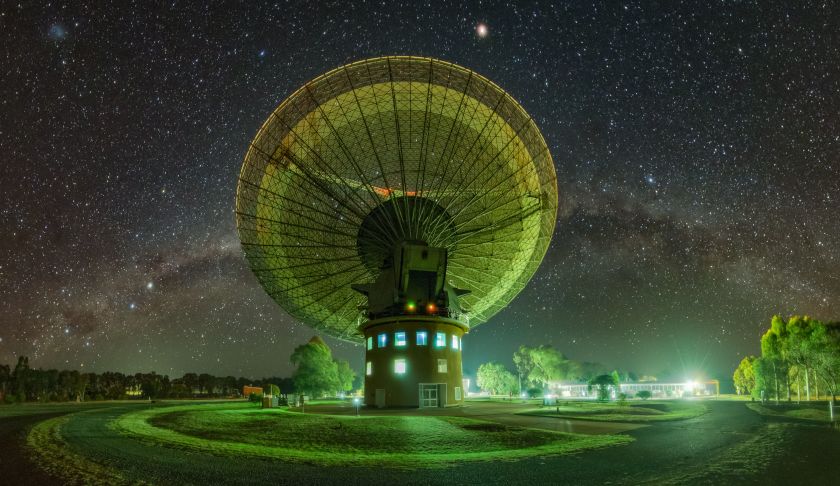The data, most of it fresh from the telescope prior to detailed study from astronomers, comes from a survey of the radio spectrum between 1 and 12 GHz.
About half of the data comes via the Parkes radio telescope in NSW, which, because of its location in the southern hemisphere, is perfectly situated and instrumented to scan the entire galactic disk and galactic centre.
The telescope is part of the Australia Telescope National Facility, owned and managed by the country’s national science agency, CSIRO.
The remainder of the data was recorded by the Green Bank Observatory in West Virginia, the world’s largest steerable radio dish, and an optical telescope called the Automated Planet Finder, built and operated by UC Berkeley and located at Lick Observatory outside San Jose, California.
Breakthrough Listen principal investigator Andrew Siemion of the University of California, Berkeley, announced the release of nearly two petabytes of data, the second data dump from the four-year old search for extraterrestrial intelligence (SETI).
A petabyte of radio and optical telescope data was released last June, the largest release of SETI data in the history of the field.
"Since Breakthrough Listen’s initial data release last year, we have doubled what is available to the public. It is our hope that these data sets will reveal something new and interesting, be it other intelligent life in the universe or an as-yet-undiscovered natural astronomical phenomenon," said Breakthrough Listen lead system administrator Matt Lebofsky.
The National Radio Astronomy Observatory (NRAO) and the privately-funded SETI Institute in Mountain View, California, also announced an agreement to collaborate on new systems to add SETI capabilities to radio telescopes operated by NRAO.
"The SETI Institute will develop and install an interface on the VLA, permitting unprecedented access to the rich data stream continuously produced by the telescope as it scans the sky. This interface will allow us to conduct a powerful, wide-area SETI survey that will be vastly more complete than any previous such search," said Siemion, who, in addition to his UC Berkeley position, is the Bernard M. Oliver Chair for SETI at the SETI Institute.
The first project will develop a system to piggyback on the National Science Foundation’s Karl G. Jansky Very Large Array (VLA) in New Mexico and provide data to state-of-the-art digital backend equipment built by the SETI Institute.
"For the whole of human history, we had a limited amount of data to search for life beyond Earth. So, all we could do was speculate. Now, as we are getting a lot of data, we can do real science and, with making this data available to general public, so can anyone who wants to know the answer to this deep question," said Yuri Milner, the founder of Breakthrough Listen.
Breakthrough Listen also released observations of the interstellar comet 2I/Borisov, which had a close encounter with the sun in December and is now on its way out of the solar system. The group had earlier scanned the interstellar rock ‘Oumuamua, which passed through the centre of our solar system in 2017. Neither exhibited techno-signatures.
Siemion added, "We didn’t find any aliens, but we are setting very rigorous limits on the presence of a technologically capable species, with data for the first time in the part of the radio spectrum between 4 and 8GHz. These results put another rung on the ladder for the next person who comes along and wants to improve on the experiment."
Siemion emphasised that the Breakthrough Listen team intends to analyse all the data released to date and to do it systematically and often.
"Of all the observations we have done, probably 20 per cent or 30 per cent have been included in a data analysis paper. Our goal is not just to analyse it 100 per cent, but 1,000 per cent or 2,000 per cent. We want to analyse it iteratively," Siemion added.
Breakthrough Listen, based at UC Berkeley, is supported by a $100 million, 10-year commitment from the Breakthrough Initiatives, founded in 2015 by Yuri and Julia Milner to explore the universe, seek scientific evidence of life beyond Earth and encourage public debate from a planetary perspective.

